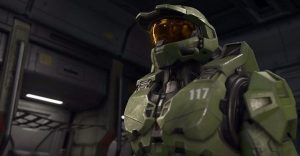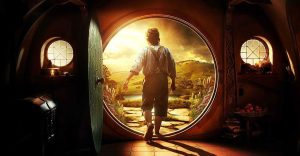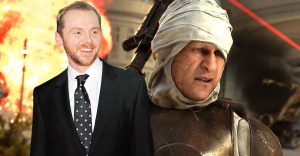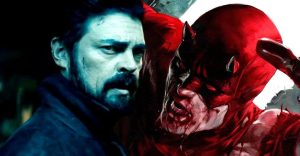15 Things You Didn’t Know About He-Man And The Masters Of The Universe
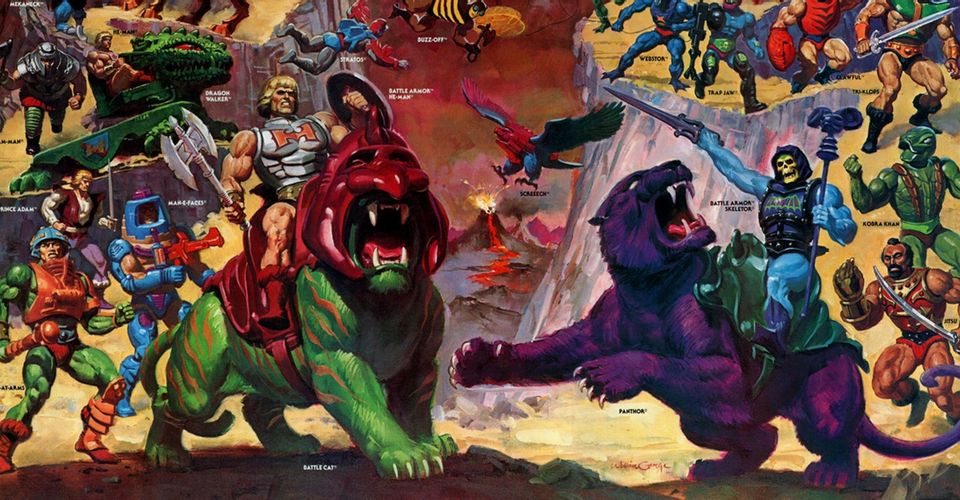
If there were three defining 1980s toy lines, they were G.I. Joe, Transformers, and He-Man and the Masters of the Universe. There was just something about He-Man— maybe it was the full-tilt mix of fantasy and science fiction. Maybe it was the unabashed, unapologetic cheesiness of it all — you can’t get much more on the nose than a multi-faced guy named Man-E-Faces. Regardless of what was behind Masters of the Universe‘s unique magic, it entranced many a child and adolescent over the many years since it first premiered back in 1983. Mattel’s upstart toy line burned white hot for several years in the mid ’80s, becoming a billion-dollar franchise thanks to toys, comics, and a mega-hit animated series.
Still, the history of He-Man is loaded with odd twists and turns (and the occasional unforgettable meme). Here are 15 Things You Didn’t Know About He-Man And The Masters Of The Universe.
15 He-Man Almost Didn’t Exist Because of Star Wars

George Lucas changed the pop culture landscape forever with his Star Wars franchise, but he also made Scrooge McDuck money-vault levels of cash thanks to the merchandising. Kenner’s iconic Star Wars action figures are an indelible part of childhood for most of us who grew up in the 1980s, and the Star Wars merchandising juggernaut hasn’t slowed down since. Some of that cash could have flowed into toy manufacturer Mattel’s coffers… but, in 1976, CEO Ray Wagner passed on the rights, put off by Lucas’ hefty asking price of $750,000. And with that, Wagner joined “the guy who cancelled Star Trek” in the pantheon of people who will eternally stand as a testament to the truth that hindsight is 20/20.
As time passed, and Star Wars became an international excuse to print money, Mattel was determined to find their own cash-cow toy line. It turns out that all they needed was a guy in a loincloth. He-Man gave Mattel their own piece of the action, complete with an afternoon cartoon conceived from the get-go to, first and foremost, sell toys. So if Mattel had landed the Star Wars contract, an unforgettable slice of 1980s nostalgia likely never would have existed.
14 He-Man could have looked very different

When it came time to come up with the next big thing for Mattel, toy designer Roger Sweet decided that what he needed was a hero who could fit in… well, anywhere. In his 2005 memoir Mastering the Universe: He-Man and the Rise and Fall of a Billion-Dollar Idea, Sweet recalled pitching He-Man as a concept that worked because of, not in spite of, its nondescript nature. When it comes to a name for your hero, you can’t get much more generic than “He-Man”, but that was exactly Sweet’s point.
Early He-Man concept sketches by toy designer Mark Taylor were based on vikings or Cro-Magnon men. In 1980, Sweet modded one of Mattel’s “Big Jim” figures and created three prototypes (seen above), showing how this new hero could fit in anywhere, precisely because his name didn’t automatically call to mind any one setting or genre. In Mastering the Universe, Sweet recalled pitching the new hero as “a powerful figure that could be taken anywhere and dropped into any context because he had a generic name: He-Man!” That left the possibilities wide open for a Masters of the Universe lore that eventually gave us an entertaining mix of science fiction and sorcery.
13 He didn’t initially have an alter ego

Prince Adam’s transformation into He-Man, his more heroic self, is one of the most unforgettable parts of the Masters of the Universe cartoons. The upthrust sword, the crackling energy, and the somewhat redundant chant: “By the power of Grayskull… I have the power!” It’s up there with Superman changing clothes in a phone booth as far as defining pop culture transformations go, and it also gave the show a perfect hook for the kids. What kid wouldn’t love the notion of a magic sword that turned them into a superhero? But initially, there was no transformation, because there was no Prince Adam.
Before the cartoon launched, He-Man’s backstory and mythology was established via those awesome little mini-comics that accompanied the action figures. In these, neither Prince Adam nor the notion of He-Man having a secret identity were anywhere to be found. While Mark Taylor’s early sketches did toy with the idea of He-Man having a royal alter ego, Prince Adam didn’t actually become canon until the Masters of the Universe cartoon launched in 1983, evolving He-Man’s origins into the form millions of ’80s kids came to know and love.
12 The cartoon originated as a bluff

With the He-Man concept locked down, it was time to sell He-Man to the most important audience: the retailer that stock toys so kids can eventually bug their parents to buy them. After all, this was long before the internet, so the only way those toys would catch kids’ eyes is if they were actually on toy shelves. Before his meetings with the toy buyers, Mattel marketing director Mark Ellis had the folks at DC Comics mock up a He-Man comic book. This way the prospective retailers got not only a toy line, but some built-in crossover marketing. In a 2013 interview, Ellis recalled completing his presentation to the Toys ‘R’ Us bigwigs, only to have one of them counter that “five-year-olds don’t read.” In a bit of Don Draper-style thinking on his feet. Ellis retorted with, “Did I tell you about the two one-hour TV specials we are running?”
Just one problem: those TV specials didn’t actually exist. So Ellis got on the phone and started setting up meetings. Hanna Barbara was a no-go, but Ellis’ meeting with Filmation proved considerably more fruitful. Filmation head Lou Scheimer proposed the idea of doing an animated series, rather than just a couple of specials. As Ellis recalled, “His brilliant thought was that since we were buying spot TV anyway, we could develop the shows for syndication, and approach a station not just with a TV show to run, but also with ad dollars.”
11 The show was a massive hit (which nobody expected)

Many eighties kids have fond nostalgic memories of He-Man and the Masters of the Universe, but it might be a surprise to learn just how big a deal the show became. A December 1984 profile in the New York Times, from a little over a year after the show’s premiere, reported that He-Man viewership was bringing in nine million viewers in its weekday afternoon syndicated slot, in the United States alone. The show was broadcast on 166 U.S. television stations, and in 37 foreign countries. At its height, He-Man was the highest-rated kids’ show in America. Not bad for a beefy barbarian with fuzzy pants.
That’s even more impressive considering the major networks initially turned their nose up at this would-be master of the universe. ABC, CBS, and NBC all passed on the show, which inspired Filmation president Lou Scheimer to target weekday afternoon syndication. That plan put He-Man in front of millions of young eyeballs five days a week rather than one– a change that no doubt helped the show and toy line achieve such titanic success.
10 He-Man’s mother is from Earth

He-Man’s adventures unfold on a distant planet called Eternia. While He-Man, Man-at-Arms, and their fellow cohorts may (sometimes) look human, they’re not; they’re Eternian. Well, that’s not quite true, because He-Man himself is actually only half-Eternian. His mother, Queen Marlena, was born on Earth.
So, how did an Earther wind up as royalty in a land of magic swords and skull-faced despots? She was actually a NASA astronaut. In a bit of Buck Rogers-esque misfortune, her ship was thrown off course and she crash-landed on Eternia. There, she was rescued by – and eventually fell in love with – King Randor.
Marlena’s Earther background was first established in “From Eternia—With Death!”, the very first DC Comics Masters of the Universe story, published in July 1982’s DC Comics Presents #47. That story finds Superman himself visiting Eternia. He-Man is able to recognize the costumed superhero because of the stories his mother had told him. Her astronaut origins were further expanded in the animated series bible written by Michael Halperin. In fact, the bible states that her NASA crew also included Biff Beastman, Evelyn Powers, and T. E. Scope– who would become Skeletor’s minions Beast Man, Evil-Lyn, and Tri-Klops. Shades of the Fantastic Four, anyone?
9 Skeletor might be family too

After the cartoon closed shop in 1985, He-Man’s story continued in both a comic series from Marvel’s Star Comics imprint and in the mini-comics that accompanied the toys. One of those mini-comics, a 1986 story entitled “The Search for Keldor,” strongly hints that the evil Skeletor was once Keldor, brother of King Randor. Keldor was said to have been lost in “a dimension beyond time” during a magical experiment gone awry. While the comic story never outright states that Skeletor and Keldor are one and the same, Skeletor spends the whole tale trying to prevent Randor and Prince Adam from learning Keldor’s fate — which makes a lot more sense if he has something to hide.
Steven Grant, who wrote the mini-comic in question, was a bit more explicit in an interview with He-Man.org. Grant said, “I seem to remember it as one of those things Mattel came up with out of the blue… Slur Keldor and you end up with Skeletor… His backstory wasn’t really worked out. Some sort of evil cosmic energies altered him. I think they were going for a Darth Vader thing, but it was a tack-on.”
Either way, the possible Skeletor/Keldor connection returned in the 2002 animated series, with Skeletor’s backstory revealing his original name as Keldor, and that he was Randor’s half-brother.
8 Gorpo became Orko to save money

In spite of helping prop up a billion-dollar franchise, He-Man and the Masters of the Universe was definitely produced on a budget. And why not? Surely there was an episode about the importance of frugality somewhere in the show’s run.
One of the more amusing cost-cutting moments, however, resulted in He-Man’s weird little wizard buddy getting a new name. He-Man fans all remember Orko — the comic relief who always hides his face under that hat of his. But his original name was Gorpo, which made him sound like a forgotten Marx Brother. So why the change? The most powerful magic of all: the bottom line.
He could have kept the original name if not for his fashion sense. See, Orko borrows a page from Superman and runs around with a giant “O” on his chest. The nice thing about the letter O — it’s symmetrical. So, for instance, you can take animated footage, flip it, and then reuse that footage, and nobody will be the wiser. If he’d stayed Gorpo, the animators wouldn’t have been able to cut that corner.
But let’s face it, an Orko by any other name is still really damn annoying.
7 Your parents hated the Slime Pit

Anyone who grew up watching Ghostbusters or Double Dare knows that one simple truth: kids love slime. Masters of the Universe embraced this truism with the aptly titled Slime Pit. A devilish mind-controlling contraption wielded by Hordak (of Evil Horde fame), the Slime Pit would turn anyone exposed to it into a mindless servant of Hordak. Stripped of all the mythology, in practical terms this meant kids got an excuse to dump noxious green sludge all over their toys. That’s something they may have been doing regardless, but this way Mattel got to charge them for it.
However, like fossil fuels, slime was a limited commodity. Sooner or later, the slime that came with the Pit would run out, and then Junior would start pitching a fit, demanding that his action figures be properly goopified. The only way to get more was buy more toys — or a whole new Slime Pit. This, unsurprisingly, did not please the parents who were suddenly having to work a “slime” line item into their monthly budgets. It became such a scandal, the LA Times even wrote about it.
6 There was almost a toy called the Ball Buster

Masters of the Universe, like any toy line worth its salt, was chock full of awesome vehicles. There was the hardy Battle Ram, the nimble Wind Raider, and of course, the funky Attak Trak. The fourth wave of toys, in 1985, introduced the “Bashasaurus,” which could swing a massive spherical mace to clear any obstacle before it. But before it was the Bashasaurus, this sweet ride almost had a considerably more… unfortunate name. If Mattel had had their way, Santa would have been getting a lot of requests for a “Ball Buster.”
Larry DiTillio, a writer on the Masters of the Universe animated series, recalled the moment the Ball Buster got busted in an interview with He-Man.org. DiTillio said:
Mattel brought us all in to show us new toys which they wanted put into the show (they did this frequently). One of the toys was a catapult device or vehicle that shot large balls. Mattel was calling it ‘The Ball Buster.’ [Filmation president] Lou [Scheimer] scotched that one two seconds after it came out of the toy company executive’s mouth.
Thankfully, the He-Man universe also includes a toy whose defining trait is that it smells terrible, so the Ball Buster still isn’t the dumbest idea Mattel ever had.
5 The cartoon characters outlived their own show

New stories of Eternia continue to be told to this day in comic books, and maybe even eventually another live-action film. But He-Man and some of the Masters of the Universe supporting cast actually outlived their cartoon without having to jump ship to another medium. He-Man, of course, spawned a spin-off — She-Ra: Princess of Power, which launched in 1985 and focused on Adam/He-Man’s twin sister, Princess Adora. Like her sibling, she can transform into a hero thanks to a magic sword, and she used her powers to defend Etheria from Hordak and his Evil Horde. But you know how it is: sometimes you need a little help from your friends.
Although He-Man and the Masters of the Universe was canceled in late 1985, She-Ra launched right as He-Man was winding down. But while She-Ra was ostensibly designed to hook young girls who might not have been into He-Man’s barbarian antics, characters from He-Man often showed up on She-Ra. Over the course of She-Ra‘s two seasons, the heroine saw visits from He-Man himself, Skeletor, Man-at-Arms, Beast Man, the Sorceress, and more. It was sort of like Marvel’s Cinematic Universe, except way less ambitious and primarily designed to keep selling toys.
4 There was almost an animated spin-off about He-Man’s son

In the mid ’90s, He-Man’s glory days were definitely behind him. The sword-swinging hero has seen a brief TV revival with the 1990 animated series The New Adventures of He-Man, and the 2002 reboot series was still a long way away. In 1996, Filmation’s Lou Scheimer tried to stage a resurrection. He put together a series bible for a proposed new cartoon entitled He-Ro: Son of He-Man and the Masters of the Universe. It would have followed Dare, a young orphaned Eternian lad who is adopted by Adam and Teela — now king and queen of Eternia, respectively — and who becomes heir to the Power Sword. Like his adoptive father before him, young Dare can transform into a powerful hero. And because this is Masters of the Universe, he gives himself the ridiculous pseudonym of He-Ro.
Scheimer pitched He-Ro to the animation company DIC, but they didn’t bite. That’s a shame, because it could have continued the continuity of the original animated series, She-Ra, and The New Adventures, allowing fans to see what had become of their favorite characters some years down the road. The show would also have seen the return of Skeletor, who had been banished years earlier by He-Man and the Sorceress, and could have even let He-Ro team up with his dad’s buff alter ego if things got too dicey.
3 The cartoon was an early gig for several big-name talents

If there had been no He-Man, we might have missed out on several staples of ’90s pop culture. That’s because the Masters of the Universe staff included among its ranks three very familiar names: Paul Dini, Bruce Timm, and J. Michael Straczynski. Dini and Timm have become legends in animation, having collaborated on Batman: The Animated Series and the various spin-offs that helped define the 1990s, and remain some of the best on-screen versions of DC Comics’ characters. Dini worked as a writer on the trifecta of great ’80s toons– He-Man, G.I. Joe, and Transformers. Timm worked as a layout artist on He-Man and a character designer on She-Ra. He also worked on The Real Ghostbusters with our third noteworthy He-Man veteran, J. Michael Straczynski.
A decade before creating the epic sci-fi series Babylon 5, J. Michael Straczynski was earning his stripes in the trenches of kids’ TV. His stint as a writer on He-Man was his first professional Hollywood credit, and he also transferred over to She-Ra once Masters of the Universe wrapped up. He then wrote for Jayce and the Wheeled Warriors, served as story editor on The Real Ghostbusters, and was head writer on the cult hit Captain Power and the Soldiers of the Future. But if He-Man hadn’t hired him, that long Hollywood career might have turned out very differently, and we might never have seen Sense8.
2 There was going to be a sequel to the live-action film

The 1987 Masters of the Universe live-action film is alternately loved, hated, or mocked mercilessly by those who actually remember it. It starred Dolph Lundgren and Frank Langella as He-Man and Skeletor, respectively, and included early appearances by Friends‘ Courteney Cox and Star Trek: Voyager‘s Robert Duncan McNeill. It was savaged by critics and controversial among He-Man fans for taking liberties with their beloved characters. Before all that, Cannon Films originally wanted a sequel, and went so far as to spend a couple million bucks on sets and costumes.
Unfortunately, things were doomed from the start. The original Masters of the Universe had underperformed, and star Dolph Lundgren was not eager to return for more. That led to him being recast by surfer/model Laird Hamilton for a proposed storyline that would have seen He-Man returning to Earth disguised as a quarterback. They even hired a director, ’80s B-movie veteran Albert Pyun (The Sword and the Sorcerer). Unfortunately, Masters of the Universe hit the box office with a deafening thud, and Cannon’s ongoing financial woes cost them the rights to He-Man. Not even the Power of Grayskull could save Masters of the Universe 2.
1 The movie’s failure killed a Spider-Man movie (and birthed a Van Damme flick)

Cannon had a lot riding on Masters of the Universe. If the movie had been a hit, it could have launched a franchise that would have helped right the floundering Cannon ship. Instead, it brought in only $17.3 million domestically, and in the process helped kill not only Masters of the Universe 2, but also a Spider-Man film Cannon had been developing. In fact, Cannon’s Spider-Man film was going to be directed by the same guy tasked with helming the Masters of the Universe sequel: Albert Pyun. When He-Man failed to conquer the box office, Cannon lost the rights to both Masters of the Universe and Spider-Man.
But there was a saving grace! Well, a couple, actually, because all signs point to Cannon’s Spider-Man movie being terrible. (Pyun said producer Menahem Golan wanted Spidey to be an actual eight-armed mutant freak, as opposed to the friendly neighborhood wall-crawler we all know and love.)
As we mentioned above, Cannon had already spent cash to make sets and costumes for Masters of the Universe 2 before the project fell apart. Rather than let those go to waste, Cannon asked Pyun to turn lemons into lemonade, and the result was the 1989 Jean Claude Van Damme flick Cyborg. Knowing the props and sets he had to work with, Pyun came up with the storyline for Cyborg in a single weekend, thus allowing Cannon to recoup the $2 million that otherwise would have been chalked up to misadventure.
—
What’s your favorite piece of He-Man trivia? Let us know in the comments!










